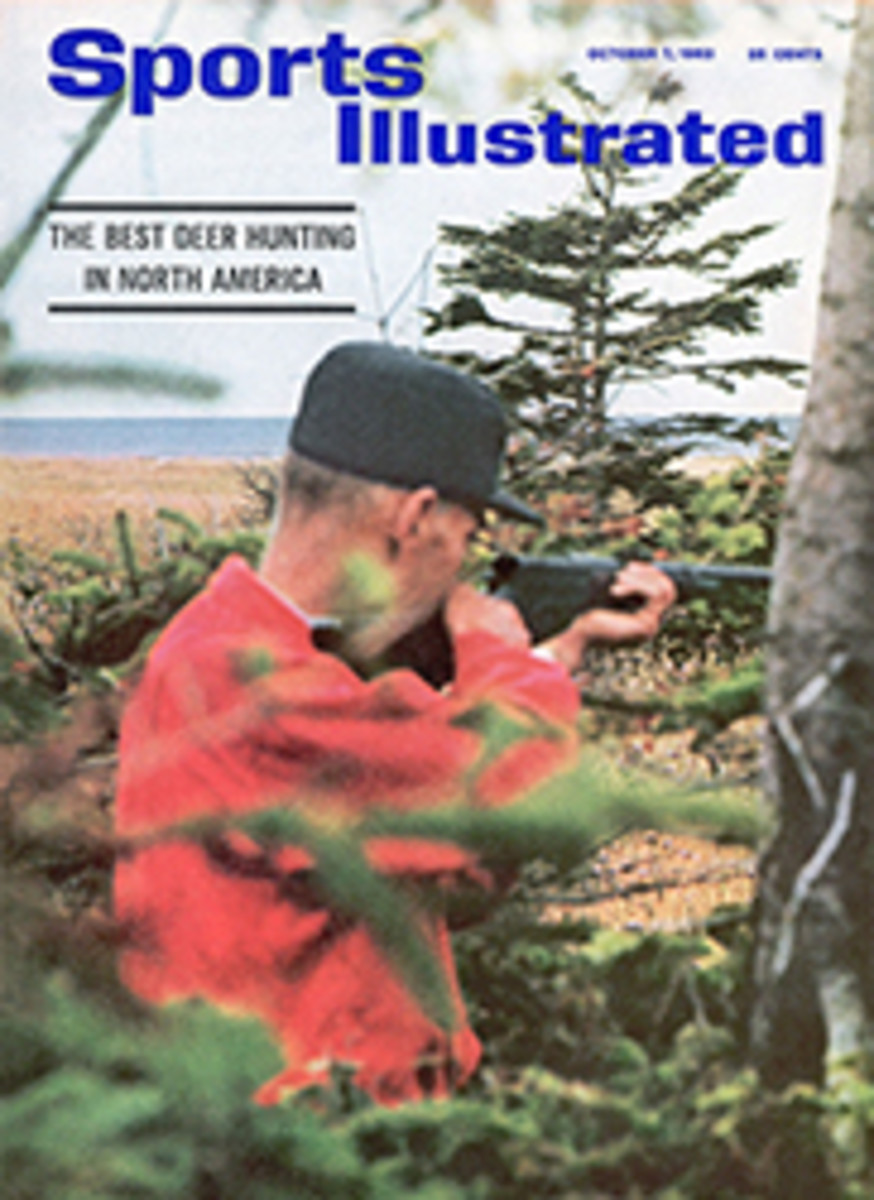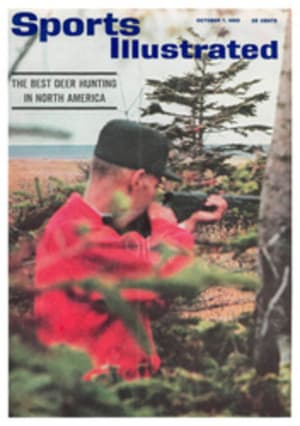
The Winchester Model 101 is a high-quality shotgun for all seasons
The shotgun, long the most popular sporting firearm in the U.S., is currently enjoying its biggest boom in the country's history. There are two important reasons for this: more leisure time for shooters to be afield and the rapid growth of shooting preserves and trap and skeet fields, many of them near enough to major metropolitan areas to draw on a previously untapped group of sportsmen. As a result, gun manufacturers are constantly turning out new and better shotguns, most of them far more rugged and adaptable to a wider variety of shooting conditions than ever before.
The most exciting new shotgun this season is Winchester's Model 101, an over-and-under double-barreled gun, custom designed and engineered by Winchester. It is manufactured, however, in Tochigi, Japan, where skilled hand labor, so necessary in the construction of fine double-barreled shotguns, is available. The result of this meeting of East and West is a high quality shotgun that sells for a reasonable $249, considerably less than most quality over-and-unders.
The Model 101, currently available in 12 gauge only, has many standard features that would, on other over-and-unders, be expensive optionals. Among them are: a gold-plated, single selective trigger that gives the shooter instantaneous choice of barrels—and thus of choke and type of shotshell load—and allows him to fire either barrel first by simply setting the selector (which also doubles as the safety); automatic ejectors which flip out only spent shells when the gun is opened, or broken; chrome-lined bores; intricate hand engraving on the receiver; and a light ventilated rib which provides a fiat sighting plane and helps to cool the barrels.
The stock and beavertail forearm on the Model 101 are of highly polished French walnut. Both the pistol grip on the stock and the forearm are nicely hand-checkered, and the metal lock parts (exposed when the gun is open) are engine-turned or "jeweled. "The gun weighs 7¾ pounds with 28-inch barrels. At present it is available in five different barrel lengths and choke combinations: 26-inch skeet boring; 26-inch improved cylinder and modified, ideal for ruffed grouse and woodcock shooting in tight, thick cover; 28-inch modified and full, a good all-round combination for upland gunning; 30-inch modified and full; and 30-inch full and full for longer-range shooting at ducks and geese.
Remington Arms Company, Inc., also has a handsome new shotgun, the Model 1100, a five-shot, gas-operated, semiautomatic in 12 gauge (16 and 20 gauge in 1964) for which the company claims "up to 40% less recoil than other automatics and more than 50% less than 'fixed action' models [double-barreled and slide-action guns]."The Model 1100 does have less recoil sensation, and it should therefore be of special interest to the shooter who is particularly sensitive to recoil and who tends to anticipate the kick of the gun by flinching, thus interrupting not only the smoothness of his swing but also his concentration on targets.
In a fixed-action, gas-operated gun, the ignition of the powder generates a small amount of gas. This gas drives the shot out of the barrel and at the same time creates an opposite force that drives the gun into the shooter's shoulder and cheek with a sharp jolt. By venting off part of the gas that operates the action nearer the chamber, where gas pressures arc at a peak, Remington has spread the recoil process over a longer period of time (actually a fraction of a second) and has thus reduced the sharp jolting recoil effect on the shooter. This reduction in recoil has been accomplished without adding weight to the gun to absorb the recoil—the Model 1100 weighs 7½ pounds in 12 gauge.
In testing the Model 1100, Remington used some 500,000 shotshells, fired the gun in rainstorms and in the desert and even put it in a freezer, from which it emerged cold but intact. The gun's receiver and bolt have scrolled engraving, and the stock and forearm, of American walnut, have checkering with an unusual fleur-de-lis pattern. The stock, which has a full pistol grip, and the forearm are protected by a new durable Du Pont wood finish similar to that used on bowling pins. Nylon buffers are used in the gun to cut down wear and tear on metal parts. The Model 1100 comes chambered for 2¾-and 3-inch shells in a variety of barrel lengths and chokes and costs $144.95 and up. Trap and skeet models are also available and extra barrels ($45-$68) are interchangeable.
For the rifle shooter, the Redfield Gun Sight Company of Denver has a new compact variable power rifle scope with a 2X-7X power spread that enables the shooter to use one scope over a wide range of hunting conditions. The new scope, which costs $94.50, is lightweight (11½ ounces) and shorter (11¾ inches) than many fixed power scopes. Its reticle (the "aiming lines" within the scope) appears finer as the power is increased and thicker as the power is decreased. Thus at 2X, 3X and 4X, where the objective lens gathers maximum light, the reticle is thick—ideal for closeup shooting at moving game in brush and timber. For long-distance shooting, with the scope power set from 5X to 7X, the fine reticle enables the shooter to examine a trophy animal and still have a precise point of aim. The degree of power is adjusted by turning a dial near the scope's eyepiece. Redfield variable scopes come with cross-hair reticles; post and cross-hair or dot reticles are $9 extra. The new scope is guaranteed to be thoroughly sealed against internal fogging.

